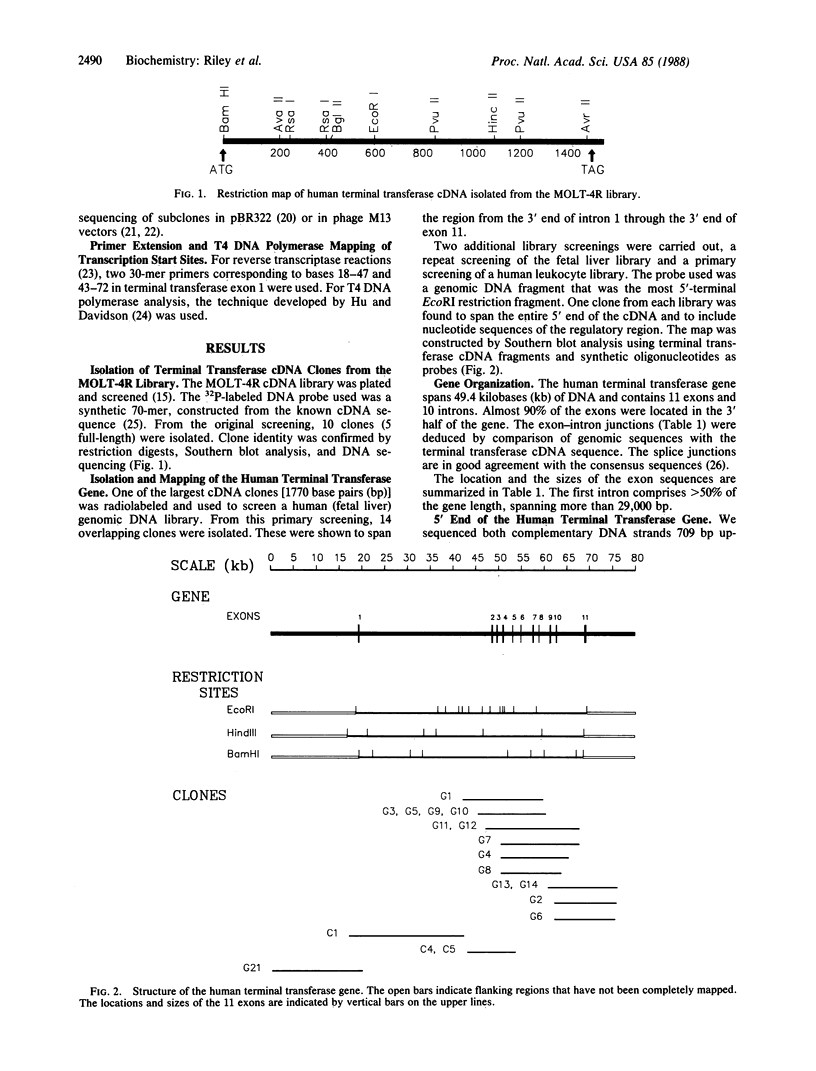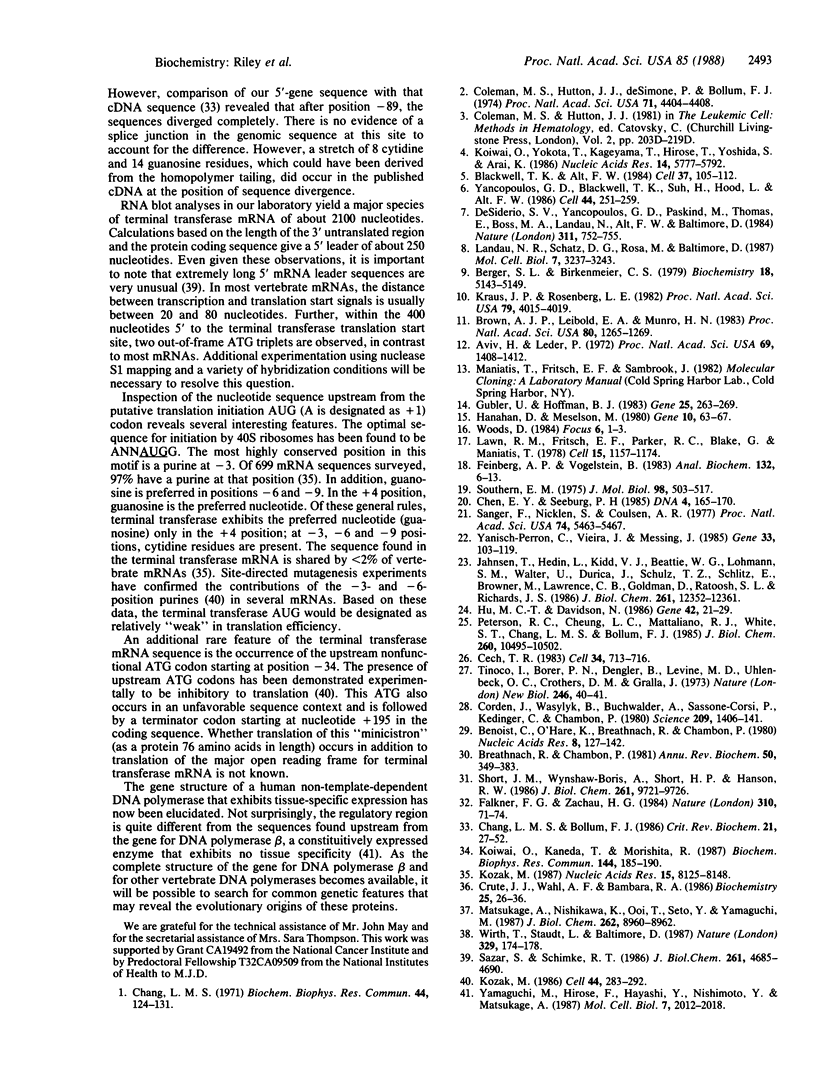Abstract
Human terminal deoxyribonucleotidyltransferase (nucleoside-triphosphate:DNA deoxynucleotidylexotransferase, EC 2.7.7.31) cDNA contains an open reading frame of 1530 base pairs (bp) corresponding to a protein containing 510 amino acids. The encoded protein is a template-independent DNA polymerase found only in a restricted population of normal and malignant prelymphocytes. To begin to investigate the genetic elements responsible for the tissue-specific expression of terminal deoxyribonucleotidyltransferase, genomic clones containing the entire human gene were isolated and characterized. Initially, cDNA clones were isolated from a library generated from the human lymphoblastoid cell line, MOLT-4R. A cDNA clone containing the entire coding region of the protein was used to isolate a series of overlapping clones from two human genomic libraries. The gene comprises 11 exons and 10 introns and spans 49.4 kilobases. The 5' flanking region (709 bp) including exon 1 was sequenced. Several putative transcription initiation sites were mapped. Within 500 nucleotides of the translation start site, a series of promoter elements was detected. "TATA" and "CAAT" sequences, respectively, were found to start at nucleotides -185 and -204, -328, and 465 and -505. Start sites were found for a cyclic AMP-dependent promoter analog at nucleotide -121, an eight-base sequence corresponding to the IgG promoter enhancer (cd) at nucleotide -455, and an analog of the IgG promoter (pd) at nucleotide -159. These findings suggest that transcripts coding for terminal deoxyribonucleotidyltransferase may be variable in length and that transcription may be influenced by a variety of genetic elements.
Full text
PDF









